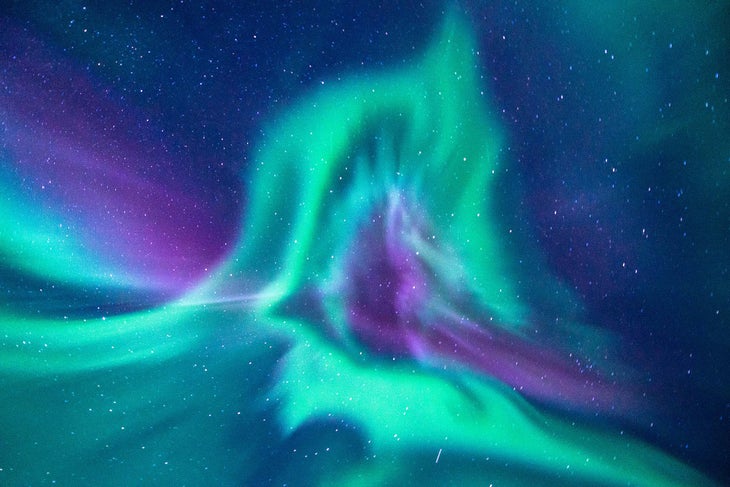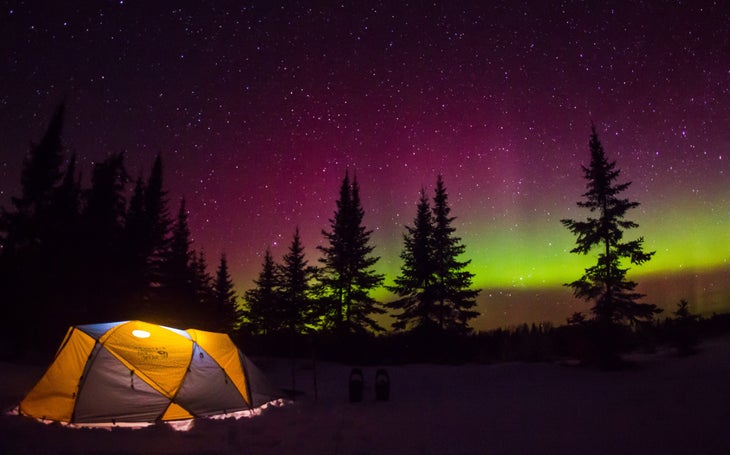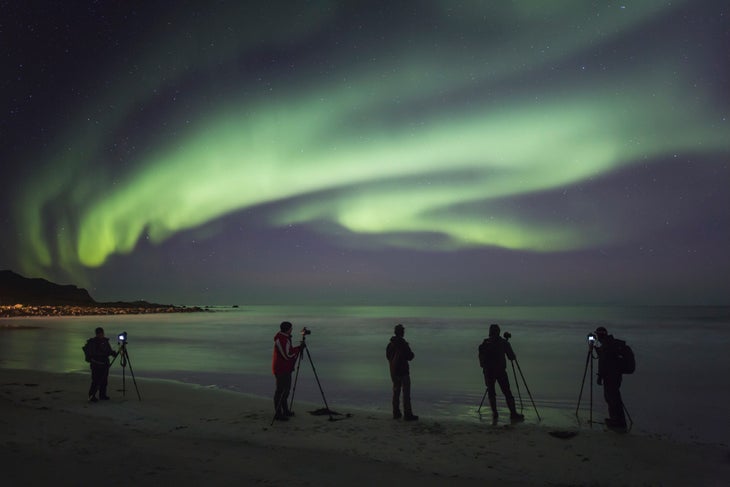Products You May Like
Get full access to Outside Learn, our online education hub featuring in-depth fitness, nutrition, and adventure courses and more than 2,000 instructional videos when you sign up for Outside+
Sign up for Outside+ today.
Read more: The Outdoors’ Most Spectacular Natural Phenomena, Explained
Dream of seeing the aurora borealis (otherwise known as the Northern Lights), but can’t afford a trip to the Arctic Circle? Try Minnesota’s Boundary Waters. The aurora is visible in the Lower 48 several times each year, usually in northern states during the spring. Dark and mild March and April nights are the best for viewing the display; that’s when the Earth’s seasonal tilt aligns the magnetic field to capture more of the solar radiation that creates the glow. Here’s how the sun lights up the night sky, and where you can see it.
Violent storms on the sun’s surface (the corona) expel a high-velocity stream of charged subatomic particles known as solar wind. The frequency of these storms fluctuates according to 11-year solar cycles, which began intensifying this spring towards a predicted peak in 2011-12.

When solar wind nears the Earth, the powerful (and potentially harmful) particles are deflected by our planet’s magnetic field–but not before the protective sheath absorbs some of their energy. As these gases move through the Earth’s magnetosphere, they are sucked towards the north and south poles like water down a drain.
The charged particles enter the atmosphere above the poles and collide with gas molecules to emit green, red, and blue light. “It’s the same reaction that illuminates a neon light,” explains Patricia Reiff, an astrophysicist at Rice University. The magnetic field guides the charged particles through the atmosphere 50 to 200 miles above the Earth, creating the aurora’s distinctive curtain-like shape.
Most aurora activity occurs in a band at 60-65 degrees north latitude–the approximate zone between Anchorage and Fairbanks. But above 45 degrees in the Midwest and Great Plains, people can often witness the displays. For campsites with good views, stay at the (A) Juniper Campground in North Dakota’s Theodore Roosevelt National Park (North Unit), or (B) the Lake Jeanette Campground in the Boundary Waters Canoe Area Wilderness.

The sun’s 27-day rotation makes it possible to predict periods of strong aurora activity. A solar storm that generates northern lights on April 1 will likely cause more electromagnetic disturbances on April 28, when the same side of the sun faces the Earth again.
How to Catch the Northern Lights

Go dark Ideal aurora viewing conditions require clear skies, minimal light pollution, and a view of the northern horizon. The best time to observe is between 9 p.m. and 1 a.m., when the tail of the magnetosphere extends away from the sun.
Shoot Long
You’ll need a tripod to photograph most displays. Start with a shutter speed of 15 seconds, an aperture of f2.0, and an ISO between 400 and 800. Use a remote shutter release, or set digital cameras on a timer to avoid jostling the camera during exposure.
And a 30 Percent Chance of Aurora…
Planning a trip up north? Check the long-term aurora forecast up to four weeks in advance
at this University of Alaska website.
